Explore Dhidhdhoo - Maldives Travel, Asia
Nestled in the northernmost region of the Maldives, Dhidhdhoo is a serene island paradise that offers a blend of natural beauty and rich cultural heritage. As one of the less-traveled islands, Dhidhdhoo presents an opportunity for travelers seeking an authentic Maldivian experience away from the bustling tourist hotspots. Whether you're drawn by its stunning beaches, vibrant local culture, or tranquil ambiance, Dhidhdhoo promises a memorable getaway. Let's go on an adventure to explore what makes Dhidhdhoo a must-visit destination, from its historical background to top attractions and local culinary delights.
Population: Approximately 3,400 in 2022.
Economy: Dhidhdhoo's economy revolves around fishing, tourism, and local trade. Its vibrant community thrives on traditional industries while catering to visitors with local guesthouses and cultural experiences.
Landmarks: Famous for the Niyama Beach, Maziya Mosque, and Hinnavaru Island.
Maldives
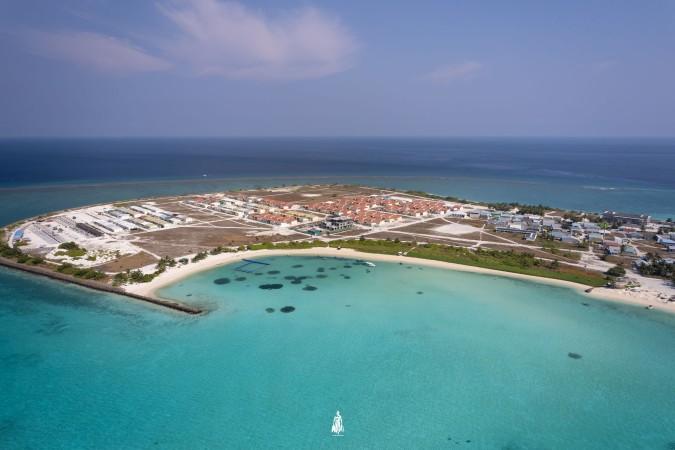
Overview of Dhidhdhoo
History & Cultural Influence
Dhidhdhoo's history is deeply intertwined with the broader narrative of the Maldives. As part of the Haa Alif Atoll, Dhidhdhoo has been a vital part of the Maldivian archipelago for centuries. The island's strategic location made it a crucial hub for maritime trade, influencing its culture and development over time. The culture of Dhidhdhoo is a vibrant tapestry woven from traditional Maldivian practices and external influences. Historical sites scattered across the island, including ancient mosques and remnants of old trading posts, provide a window into its past. Local festivals, traditional music, and intricate crafts reflect the island's unique cultural identity, shaped by both historical events and natural surroundings.
Interaction with The Locals
Dhidhdhoo is home to a close-knit community of approximately 3,400 residents. The island’s population is known for its friendly and welcoming nature, reflecting the warmth and hospitality characteristic of Maldivian culture. The citizens of Dhidhdhoo primarily engage in traditional activities such as fishing and farming, alongside a growing interest in tourism-related occupations. The community values its cultural heritage and is keen to share its unique traditions with visitors.
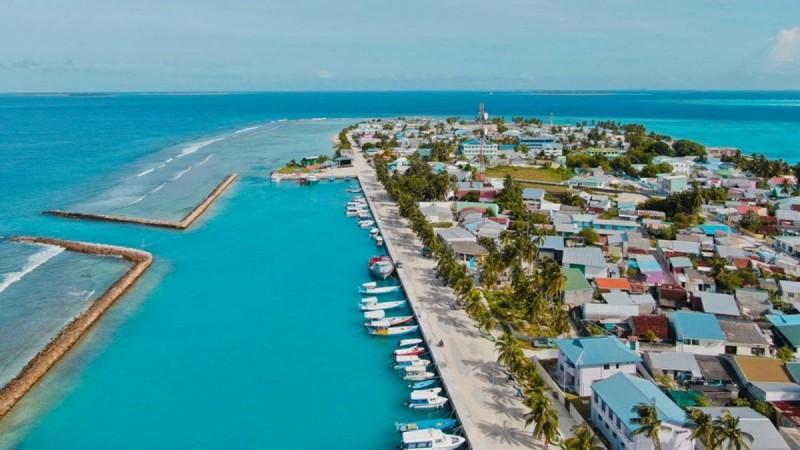
Dhidhdhoo's coast - © Raajje
Top Attractions in Dhidhdhoo
Dhidhdhoo is brimming with attractions that highlight its natural beauty and cultural heritage. These must-see attractions showcase the diverse experiences Dhidhdhoo has to offer, from stunning natural landscapes to rich cultural sites.
- Niyama Beach: Known for its serene white sands and crystal-clear waters, Niyama Beach is the perfect place to unwind and soak in the Maldivian sun. Its calm waters are ideal for snorkeling, offering a chance to discover vibrant coral reefs and marine life.
- Maziya Mosque: A historical gem, Maziya Mosque is one of the island’s oldest mosques. Its traditional Maldivian architecture and intricate woodwork make it a fascinating site for those interested in the island's Islamic heritage.
- Dhidhdhoo Local Market: Dive into local life at the Dhidhdhoo Local Market. Here, you can find an array of traditional crafts, souvenirs, and fresh produce. It’s a vibrant hub where you can experience the island’s everyday activities and purchase unique items.
- Kondhu Wadi: This scenic nature trail winds through lush vegetation and along the coastline, offering breathtaking views and opportunities for birdwatching. It’s a great way to immerse yourself in the island’s natural environment.
- Hinnavaru Island: Just a short trip away from Dhidhdhoo, Hinnavaru Island is known for its charming local village and beautiful coastal scenery. It’s an excellent destination for a day trip to experience more of the Maldivian way of life.

Niyama Beach - © Maldives Tourism
Must-Try Dishes in Dhidhdhoo
Exploring Dhidhdhoo’s culinary tradition offers a delightful experience for food lovers. The island’s cuisine features an array of flavors, from traditional Maldivian dishes to local specialties. Each of these dishes provides a unique taste of Dhidhdhoo’s culinary heritage, ensuring that your visit is both flavorful and memorable.
- Mas Huni: A traditional Maldivian breakfast staple made from tuna, coconut, onions, and chili, served with roshi (flatbread). It's a tasty and exciting way to begin the day.
- Garudhiya: A savory fish soup made with tuna, onions, and spices. It’s typically enjoyed with rice, lime, chili, and onions, offering a comforting and hearty meal.
- Fihunumas: Grilled fish marinated in local spices. It’s a delectable way to enjoy the island’s fresh seafood with a burst of flavor.
- Hedhikaa: Traditional Maldivian snacks that include an assortment of savory treats such as fish cakes and coconut pastries. These are perfect for sampling different flavors and enjoying local tea time.
- Saagu Bondibai: A sweet dessert made from sago pearls, coconut milk, and sugar. It's a creamy, soothing dessert popular among locals.
- Boshi Mashuni: A refreshing salad made from bananas, coconut, and spices. This unique dish combines sweetness with a hint of spiciness, making it a flavorful addition to any meal.
- Dhon Riha: A rich, coconut-based curry made with a variety of meats or seafood. It’s known for its deep, aromatic flavors and is typically served with rice.
- Bajje: Maldivian fritters made from lentils and spices. They are crispy on the outside and tender inside, often enjoyed as a snack or appetizer.
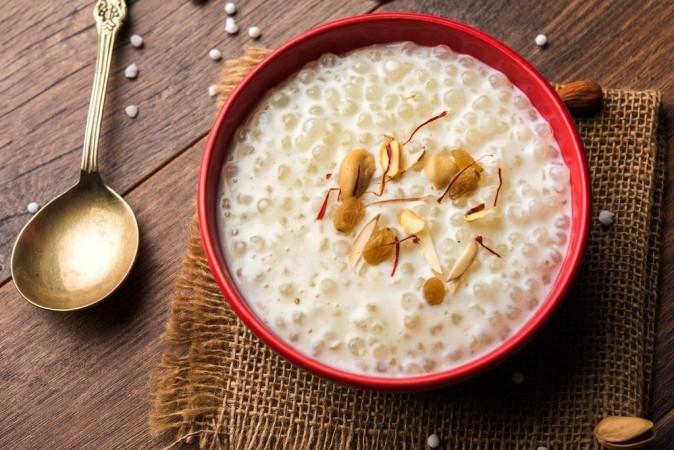
Saagu Bondibai - © Freepik
Festivals & Local Celebrations
Dhidhdhoo’s calendar is rich with festivals and local celebrations that reflect the island’s vibrant culture and traditions. These festivals and celebrations provide a wonderful opportunity to experience Dhidhdhoo’s cultural richness and engage with the local community in meaningful ways.
Eid Celebrations
These significant Islamic festivals mark the end of Ramadan, the holy month of fasting. Eid al-Fitr and Eid al-Adha in Dhidhdhoo is celebrated with communal prayers at the mosque, followed by festive feasts featuring an array of traditional dishes. The community comes together to exchange gifts, visit family and friends, and enjoy cultural performances and activities. It's a happy occasion full of coziness and camaraderie.It's a happy occasion full of coziness and camaraderie.
Local Fishermen’s Festival
This unique festival celebrates Dhidhdhoo’s deep connection to fishing, a cornerstone of island life. During the Local Fishermen’s Festival, visitors can witness traditional fishing techniques and enjoy freshly caught seafood. The event includes demonstrations, cooking classes, and seafood tastings, providing insight into the island’s fishing heritage. Cultural performances and traditional music add to the festive ambiance.
Maldivian Cultural Day
Held annually, Maldivian Cultural Day is a celebration of the nation’s rich cultural heritage. In Dhidhdhoo, this day features a vibrant display of traditional Maldivian music, dance, and art. Local artisans showcase their crafts, including woven mats, intricate carvings, and colorful textiles. The festival also includes interactive workshops and performances, offering visitors a hands-on experience of Maldivian culture.
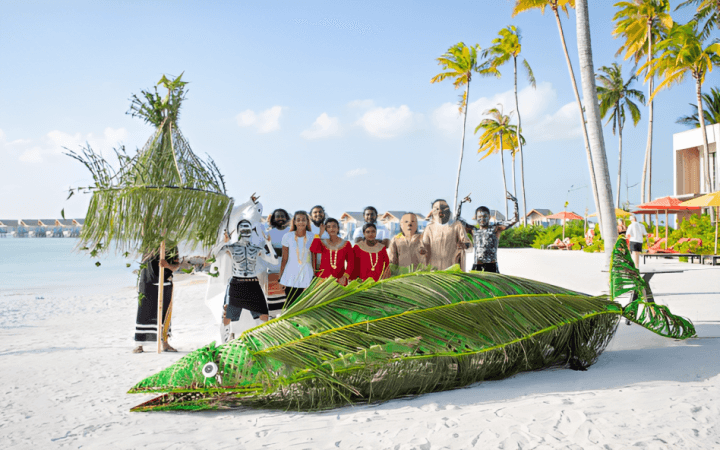
Eid Celebrations - © Splendid Asia
What to Do in Dhidhdhoo
Dhidhdhoo offers a variety of activities that cater to different interests, ensuring a fulfilling visit for every traveler. These activities provide a well-rounded experience of Dhidhdhoo, from its natural wonders to its cultural richness.
- Snorkeling in Dhidhdhoo: Explore the vibrant coral reefs and diverse marine life that surround Dhidhdhoo. The clear waters provide excellent visibility for underwater adventures.
- Fishing Tours in Dhidhdhoo: Take part in a traditional fishing experience with the local fisherman. It’s a hands-on way to learn about the island’s fishing practices and enjoy the fruits of your labor.
- Dhidhdhoo Cultural Tours: Discover Dhidhdhoo’s cultural heritage through guided tours that include visits to historic sites, local markets, and traditional crafts.
- Dhidhdhoo Beach Relaxation: Spend a day lounging on the picturesque beaches of Niyama Beach, where you can unwind, swim, or enjoy a seaside picnic.
- Nature Walks in Dhidhdhoo: Take a stroll along the nature trails of Kondhu Wadi to experience the island’s natural beauty and spot local wildlife.
Shopping in Dhidhdhoo
Shopping in Dhidhdhoo offers a chance to take home a piece of Maldivian culture. Here are some highlights. Shopping in Dhidhdhoo is not only about finding great items but also about connecting with the island’s culture and supporting its local economy.
- Local Markets: The Dhidhdhoo Local Market is the place to find traditional crafts, including hand-woven mats, local jewelry, and intricate wood carvings. It’s a great spot to pick up souvenirs and experience local commerce.
- Crafts and Souvenirs: Look for unique items like coconut shell art, traditional Maldivian clothing, and local spices as these handcrafted goods would make some great memorable keepsakes.
- Seafood and Spices: The island’s markets also offer fresh seafood and a variety of local spices. Bringing home these flavors is a great way to extend your Maldivian experience.
- Artisan Goods: Visit local artisans to see their work and purchase handmade items. Supporting local craftspeople provides a more meaningful shopping experience.
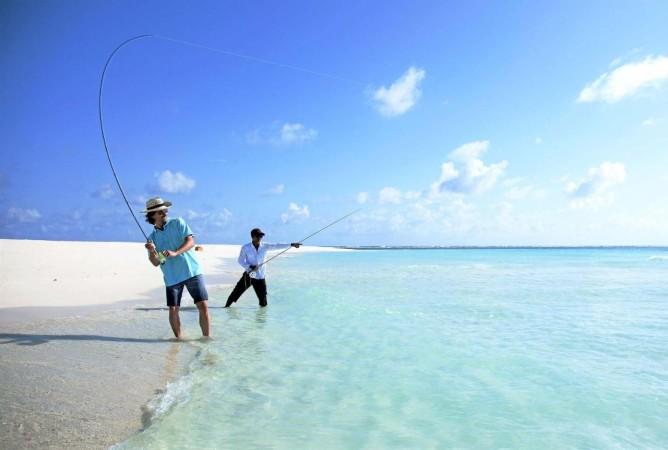
Fishing Tours in Dhidhdhoo - © Maldives Tourism
Weather in Dhidhdhoo: Best Time to Visit
Dhidhdhoo enjoys a tropical climate with year-round warmth and high humidity. Understanding the seasonal weather trends can help you plan your visit to make the most of your experience.
Dry Season in Dhidhdhoo
This period is considered the peak tourist season in Dhidhdhoo. With lower humidity and less rainfall, the weather is ideal for beach activities, snorkeling, and exploring the island’s natural beauty. Clear sky and tranquil waters provide ideal weather for outdoor activities and tourism. Expect higher accommodation rates and more tourists during this season, but also the best weather for enjoying the island’s attractions.
Wet Season in Dhidhdhoo
During the southwest monsoon, Dhidhdhoo experiences increased rainfall and higher humidity. While this season brings occasional heavy showers, it’s also a time when the island’s landscape is lush and vibrant. This time is less busy, creating a more peaceful and relaxing atmosphere. Travelers during this season can enjoy lower accommodation prices and a quieter experience, although some outdoor activities may be limited due to the weather.
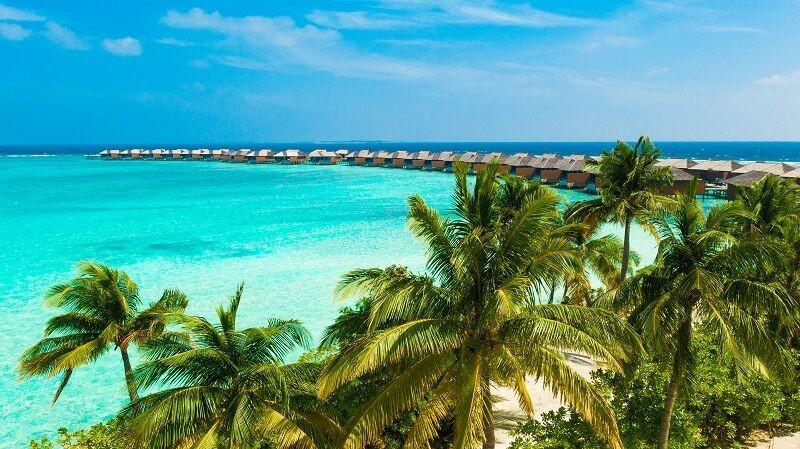
Dry Season in Dhidhdhoo is the ideal time for your Maldives great escape - © Maldives Tourism
Culture Etiquette in Dhidhdhoo
When visiting Dhidhdhoo, it’s important to respect local customs and cultural practices. Following these cultural guidelines will help you interact respectfully with the locals and enhance your overall experience in Dhidhdhoo.
- Dress Modestly: The Maldivian culture values modesty, especially in local villages. It’s advisable to wear clothing that covers the shoulders and knees when exploring the island or visiting religious sites.
- Respect Religious Practices: Dhidhdhoo is predominantly Muslim, so be mindful of prayer times and religious customs. During prayer times, avoid walking through prayer areas and be respectful of local traditions.
- Photography: Prior to taking pictures of someone, you should always get their consent, especially in rural locations. Respect people's right to privacy and refrain from taking unauthorized photos of places of worship.
- Dining Etiquette: It's customary to eat with your right hand when dining with natives as the left hand is dirty. Additionally, pay attention to regional dining traditions.
Essential Travel Information
Getting Around Dhidhdhoo
Dhidhdhoo offers several transportation options to help you navigate the island and explore its surroundings.
- Bicycles and Motorbikes: Renting bicycles or motorbikes is a popular and eco-friendly way to explore Dhidhdhoo. Many visitors opt for bikes to leisurely tour the island and reach remote spots.
- Boats: Given Dhidhdhoo’s island location, boats are essential for traveling to and from neighboring islands or resorts. Local dhonis (traditional boats) are commonly used for these purposes.
- Walking: For those who enjoy a more leisurely pace, walking is a great way to explore Dhidhdhoo. The island is relatively small, and walking allows you to fully appreciate its scenic beauty.

Walking along Dhidhdhoo's streets to explore the local life - © Zuvaan Masveriya
ATM & Banking Services
During your stay in Dhidhdhoo, managing your finances is straightforward with several available options. The island features a few ATMs conveniently located in commercial areas, providing easy access to cash withdrawals. Local banking facilities are available for a range of transactions, including currency exchange and account services. Many businesses accept major credit cards, but carrying some cash is advisable for smaller vendors or remote areas. Currency exchange can also be conducted at local banks and some hotels, ensuring you have enough cash for smaller transactions or times when banking services might be limited.
Where to Stay in Dhidhdhoo
Each accommodation type offers different benefits, so you can choose based on your preferences for comfort, cultural immersion, and budget.
- Guesthouses: If you want to have a more genuine experience, think about booking a room in a guesthouse in the area. You may experience customized hospitality and become fully immersed in the local way of life by staying at these lodgings.
- Hotels: There are several small to mid-range hotels on the island that offer comfortable rooms and basic amenities. These hotels cater to travelers looking for convenience and value.
- Resorts: While Dhidhdhoo is less commercialized compared to other Maldivian destinations, there are a few resorts and boutique hotels that offer upscale amenities and exclusive experiences.
- Homestays: A very authentic experience may be had by staying with Maldivian families through homestays. This option can be a fulfilling way to establish a connection with the community and provides insight into daily life on the island.
Des articles pour vous
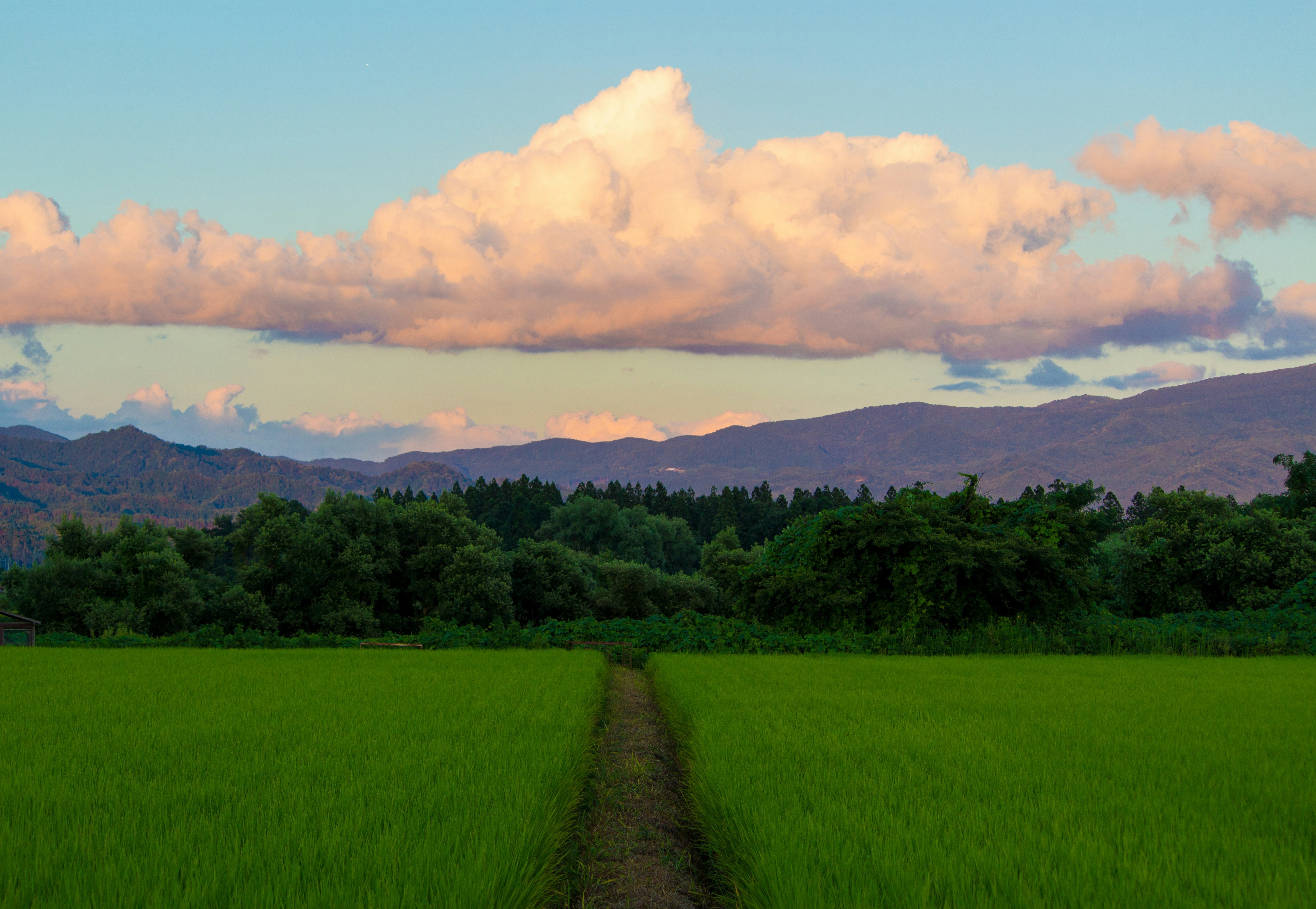
Explore Fukushima - Japan Travel, Asia
Nestled in Japan's scenic Tohoku region, Fukushima offers travelers a unique blend of historical charm, cultural richness, and natural beauty. Known for its stunning landscapes and welcoming communities, Fukushima is an excellent destination for those seeking an authentic Japanese experience beyond the bustling metropolises. Renowned for its diverse attractions, from ancient castles and hot springs to vibrant festivals and picturesque countryside, Fukushima offers a great opportunity for cultural and historical exploration for anyone who loves Japanese culture.
Population: Approximately 1.8 million in 2023.
Economy: Specializing in the seafood and fishing industries, Fukushima, with its historical impacts, now continues to thrive as one of the most developed and largest economies in Japan.
Landmarks: Famous for Aizu-Wakamatsu Castle, Fukushima City Historical Museum, and Ouchi-juku.

La symphonie saisonnière de l'Inde : Révéler les meilleurs moments pour explorer le sous-continent
Les traditions anciennes dansent avec les merveilles modernes dans une terre où les épices et l'encens embaument l'air, et chaque recoin cache une histoire prête à être découverte. L'Inde, vaste et diverse, se déploie comme un monde miniature en soi. Mais quand devriez-vous entreprendre ce voyage épique ? Rejoignez-nous pour un tourbillon à travers la tapisserie saisonnière de l'Inde et trouvez le moment parfait pour votre aventure.

Voyage culinaire à travers la Chine : Savourez les saveurs diversifiées
Des rives subtropicales de Canton aux steppes balayées par le vent du Xinjiang, le vaste paysage de la Chine est une tapisserie de saveurs, chaque région mettant en avant ses propres trésors culinaires. Avec plus de 2000 miles séparant les palais de dim sum du sud des étals de kebabs du nord-ouest, et des woks crépitants entre les deux, la diversité gastronomique de la Chine est véritablement inégalée. Alors, prenez vos baguettes et embarquez pour une aventure gourmande à travers les plats les plus délicieux du Royaume du Milieu !

Vivez l'expérience à bord du RV Indochine II - Une croisière sur le Mékong
Le RV Indochine II est un navire de croisière fluviale de luxe, offrant un voyage inoubliable à travers de nombreuses attractions le long du fleuve Mékong. Construit en 2017, ce vaisseau haut de gamme allie élégance coloniale et commodités modernes pour créer un environnement à la fois confortable et élégant pour son équipage et ses passagers. La taille intime du navire en fait le choix idéal pour ceux qui recherchent une expérience de croisière plus personnelle tout en explorant la culture, les paysages et le patrimoine riches du Vietnam et du Cambodge. Que vous admiriez le paysage depuis votre balcon privé ou que vous dégustiez une cuisine locale authentique, le RV Indochine II promet une aventure exotique hors du commun.

Assistez à la pêche sur pilotis au Sri Lanka
Le Sri Lanka, réputé pour ses plages magnifiques et son riche patrimoine culturel, abrite une tradition unique qui captive les voyageurs depuis des siècles : la pêche sur pilotis. Cette pratique ancienne, transmise de génération en génération au sein des communautés côtières, allie art et nécessité, offrant un aperçu d'un mode de vie intimement lié aux rythmes côtiers de l'île. La pêche sur pilotis au Sri Lanka n'est pas simplement un moyen de capturer des poissons ; c'est un emblème culturel, incarnant la résilience et l'ingéniosité des communautés de pêcheurs sri-lankaises.

À l'assaut des sommets : guide du randonneur de l'Himalaya
Lorsque les premiers rayons du soleil teintent les sommets enneigés de doré et de rose, vous êtes au seuil de l'aventure. Bienvenue dans l'Himalaya, où chaque pas est une immersion dans le plus grand spectacle de la nature. Avec Tweet World Travel comme guide, préparez-vous à un trek d’aventures, qui éveillera vos sens et vous transformera à jamais.
